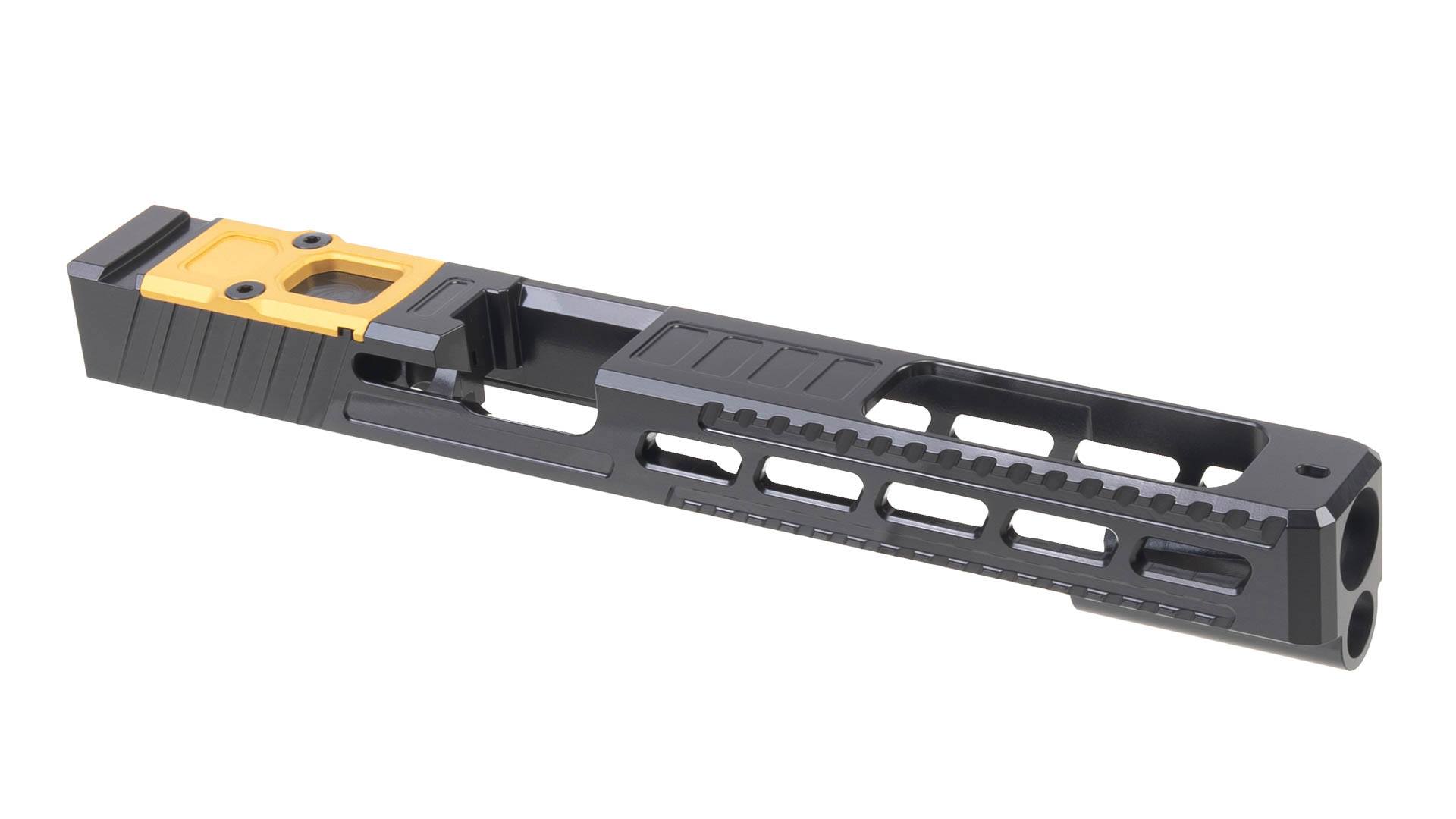The Glock 25 slide is a component that often escapes casual attention until a shooter begins to consider performance differences, optics compatibility, or long-term durability. For owners of the Glock 25, the slide is more than cosmetic metal; it governs cycling dynamics, sighting options, and how the pistol feels in hand. Whether you are exploring an OEM replacement or a specialty aftermarket upgrade, understanding the role of the Glock 25 slide helps clarify what improvements are realistic and which trade-offs to expect. A well-chosen Glock 25 slide can preserve factory reliability while allowing targeted enhancements like improved serrations, optics readiness, or refined finishes that stand up to daily carry.
Design and purpose behind the Glock 25 slide
At its core, the Glock 25 slide is engineered to balance mass, strength, and geometry so the pistol cycles reliably with the .380 ACP platform for which this model is known in certain markets. The engineering decisions baked into the Glock 25 slide—rail dimensions, extractor geometry, and chamber face tolerances—are intended to deliver consistent feeding and extraction across a wide variety of ammunition. For many users, preserving the original dimensions of the Glock 25 slide is essential because those tolerances are what make the pistol compatible with factory barrels and recoil spring assemblies. When designers consider aftermarket variants, they often start from the baseline the Glock 25 slide establishes and then tune weight or add milling to support optics or aesthetic preferences without compromising headspace.
Materials and finishes: what to expect
Choosing an OEM or specialty Glock 25 slide often comes down to the metal and protective finishes applied. Factory Glock 25 slide options typically use proven heat-treated steels and corrosion-resistant coatings intended for the demands of regular carry. Specialty manufacturers may offer alternative steel grades, nitriding, or ceramic coatings that change wear characteristics and surface friction. These differences can matter over tens of thousands of rounds: a properly finished Glock 25 slide resists corrosion from sweat and handling, sheds abrasive particles more readily during cleaning, and maintains a uniform interface with the frame rails. When evaluating potential upgrades, think about the environmental exposure your pistol will see and how a given Glock 25 slide’s coating or metallurgy will hold up to repeated holstering and unholstering.
Serrations, optics, and functional milling
A visible axis of customization for the Glock 25 slide is the pattern of serrations and the presence of functional cuts or windowing. Aggressive front and rear serrations on a Glock 25 slide can dramatically improve purchase when racking the slide in adverse conditions or while wearing gloves. For those interested in improving sight acquisition, optics-ready milling offers a clear path to mounting miniature red dot sights on a compact platform. However, optics-ready Glock 25 slide variants require careful attention to footprint and sight height so that co-witnessing with taller sights is possible and the optic sees a consistent sight picture. Milling and weight-reducing cuts can create a sleeker look and faster cycling, but they also alter the slide’s mass and thus the timing of the pistol’s action.
Fitment and compatibility considerations
Compatibility is the single most practical concern when swapping or replacing a slide on a Glock 25. An OEM Glock 25 slide is the fail-safe option because it is made to match the factory barrel, recoil system, and striker assembly. Aftermarket Glock 25 slide options sometimes necessitate matched barrels, tuned recoil springs, or minor fitting to ensure reliable function. The rail engagement and striker-to-slide interface must be precise; deviations here can manifest as timing issues, erratic extraction, or increased wear. For owners who depend on their pistol for daily carry, maintaining the tried-and-true specifications of the Glock 25 slide often outweighs the aesthetic gains of an unproven aftermarket alternative.
Maintenance, longevity, and everyday use
Daily-carry pistols have unique maintenance demands, and the Glock 25 slide is no exception. Frequent holstering, exposure to body oils, and environmental contaminants can accelerate wear if the slide’s finish or material is not robust. Regular inspection of the slide rails, extractor engagement area, and the chamber face helps detect early signs of wear. A properly maintained Glock 25 slide will continue to deliver consistent headspace and reliable extraction over prolonged service life; neglecting routine care, even with an OEM slide, can turn a dependable pistol into one that requires parts replacement sooner than necessary. Owners who keep the Glock 25 slide clean and lightly lubricated will notice smoother manipulation and fewer surprises during function checks.
Choosing between OEM and specialty Glock 25 slide options
Deciding whether to stick with an OEM Glock 25 slide or to pursue a specialty option depends on use case and tolerance for tinkering. For those who prioritize a no-fuss, proven platform, the OEM Glock 25 slide remains the clear choice—its factory tolerances minimize the need for complementary upgrades and reduce the risk of introducing reliability problems. Conversely, shooters who want an optics-ready setup, unique serration patterns, or advanced coatings may find a specialty Glock 25 slide attractive, provided they understand the potential need for a matched barrel or adjusted recoil spring to maintain reliable cycling. The best upgrades are those that align with intended use: daily carry, occasional range work, or competitive settings each demand different priorities from the slide.
Final thoughts on performance and selection
The slide is central to a pistol’s function, and the Glock 25 slide is no different; it mediates everything from recoil impulse to sighting options to long-term wear. Whether you choose a factory Glock 25 slide for its tried-and-true compatibility or opt for a specialty variant that introduces optics readiness or aesthetic flair, paying attention to materials, fitment, and maintenance will determine how satisfying the upgrade proves to be. A considered choice—guided by realistic expectations and a clear understanding of trade-offs—will yield a Glock 25 slide that enhances handling, preserves reliability, and matches the role you expect your pistol to play.



